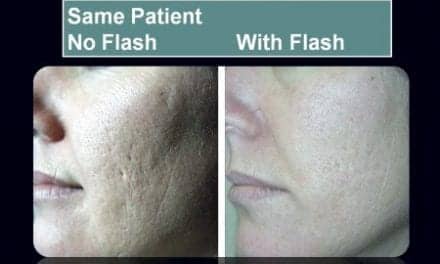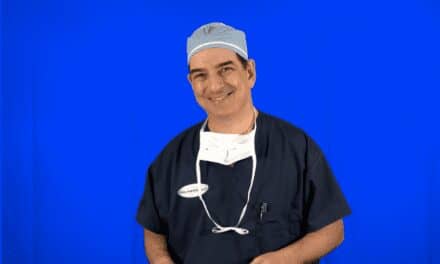Word-of-mouth advertising will never die out, but it is important for even established plastic surgeons to understand online advertising and how to effectively use it to grow their practices.
 |
UNDERSTANDING SEARCH ENGINE MARKETING
There are two ways for your Web site to show up on search engines: organically and via paid search.
The organic listings are the main results that appear on a search results page when a user enters a query. These results are ranked in terms of relevance to the search term that is being searched and cannot be purchased or bought.
The other way to show up on the search results page is to set up a pay-per-click advertising campaign, which is labeled on Web pages as a sponsored listing.
Search engine marketing (SEM), which is also known as pay-per-click advertising, is an Internet-based advertising model that gives advertisers large and small a chance to bid on keywords and appear on major online search engines. Advertisers specify the amount they are willing to pay per click (or visit to their Web site) and pay only when a searcher clicks on their advertisement.
Each search engine has a different pay-per-click program. However, the general breakdown of how these campaigns are set up is very similar. Each engine can perform very differently for every practice and even each procedure, but it makes sense to start with the search engine with the highest number of searches.
What are the top three search engines in the United States and their advertising programs? Google AdWords, Microsoft Advertising Ad Center, and Yahoo! Marketing Solutions.
HAND PICK YOUR AUDIENCE
 |
One of the biggest advantages of SEM for plastic surgeons is that you are able to laser-target your audience via geographic targeting. Most engines give you the option to target a radius around your clinic’s address, and at bare minimum you are able to focus on a specific city. This cuts out wasted dollars spent on people who are too far away from your clinic to even consider your practice for their cosmetic procedure or treatment.
If your practice has been in business for a while, you will have an idea of how far people are willing to drive for each procedure. For some procedures, you will want to advertise to your entire state; whereas with other procedures you may want to advertise to only your local city.
If you are uncertain how far to market for each procedure, then create a simple survey that gathers this information as new patients come in. For example, most patients will probably stick to a laser hair removal clinic close to their house, as it takes many visits to complete some treatments. On the other hand, some may be willing to drive many miles to see a top rhinoplasty surgeon on the East Coast.
CHOOSE RELEVANT KEYWORDS
A keyword is the phrase that a searcher types into the search engine. When setting up pay-per-click campaigns you will be able to specify exactly which keywords for which you want your ads to show. A good variety of free tools can help you compile your keywords list. However, the best way to come up with your initial list is to think of your patients’ needs.
 |
What would they type into a search engine when looking for your procedures? Make sure you build out a keyword list for each procedure you offer and also one around general cosmetic surgery keywords.
Note the following examples of keywords that plastic surgeons might use:
- Cosmetic surgery prices;
- Rhinoplasty procedures;
- Facelift information; and,
- Liposuction in your state.
Don’t forget to include location qualifiers in your keyword list, as suggested by the last keyword example above.
These keywords tend to result in more leads and cost less per click. Google has options for local advertisers that enable their street address to appear alongside their ads as well as show up on Google maps as a “pinned” location.
You will also want to bid on your clinic name and even the names of the doctors in your practice.
These keywords tend to produce the most success as they are so specific and qualified. Even if you have organic rankings already on these keywords, it is best practice to bid on these terms in your pay-per-click campaigns.
 |
This gives you more visibility on the search results page, and also prevents your competitors from stealing traffic away from potential patients who are searching on your branded terms.
Each search engine allows you to specify negative keywords. These will keep your ads from appearing on irrelevant or irreverent search results pages.
Here are a few examples of negative keywords that plastic surgeons should include: lawsuit, law, class, courses, training, and celebrity. Failing to add the appropriate negative keywords causes many advertisers to spend thousands of dollars on irrelevant terms that will never bring you any leads.
WRITING AND TESTING SUCCESSFUL ADS
Write ads that are specific to each procedure you offer. This can be done by creating separate ad groups for each procedure. Each ad group has a set of ads that is displayed for its group of keywords. The hierarchy of a pay-per-click account is at right.
By writing ad text that is very specific to the theme of keywords in each ad group, you are delivering very specific ads. Each engine differs in the character limits for text ads, but the most common format is a headline of 25 characters; and the descriptions lines as well as the display URL contains 35 characters.
If your ad group contains all keywords related to facelifts, for example, you would want your ad group to be very specific to this procedure. For an example:
 |
In addition, you want to make sure the page that contains this ad will send searchers to pages that are very specific to facelifts.
Directing your paid ads to your home page is almost always a mistake. It’s a good idea to invest some time creating custom “landing pages,” where searchers will always find information about facelifts and other top procedures.
Landing pages should contain information specific to the procedure it is promoting. This can include testimonials, recovery time, before-and-after pictures, and contact information, so the searcher may schedule a consultation or get more information. It is a good idea to have a link for out-of-town patients and one that leads to information on your payment policy. A virtual tour of your practice is also a nice touch.
PRICING STRUCTURE
How much will pay-per-click advertising cost? The good news is that advertisers are able to set a daily budget that allows them to control their ad spend. When starting your campaigns, it makes sense to start with a low budget. As you monitor the leads that come in, you can increase the budget when you see that the leads are converting to patients. Most search engines will allow you to spend as little as $1 per day. You won’t get much traffic with this low advertising budget, but at least when you start out you can scale accordingly until you have a good grasp on how well the campaigns are performing.
Also, with pay-per-click advertising you pay only when someone actually clicks on your ad. You specify a maximum cost that you would pay for that click, and your bid is placed in an auction. If your bid is lower than most of your competitors, then it won’t place high in the search results and may even show up on the second search results page—if at all.
You can adjust bids as often as necessary. Each engine has a complex algorithm that determines your ad rank. The bottom line is that the more relevant your keyword is to your ad text, usually the better your ad will perform and the less you will pay per click.
MONITORING YOUR CAMPAIGN’S PERFORMANCE
Each search engine offers free conversion tracking tools that allow advertisers to see exactly how their pay-per-click campaigns are performing. If you have a “contact us” fill-in form on your Web site, you can configure these tools to monitor exactly how many times a certain keyword leads to someone filling out that form. This results in tremendous transparency in which keywords and campaigns lead to acquiring new patients. You can take it a step further and get feedback from your receptionist or patient coordinators on the quality of these additional leads.
After your campaigns have been running for a few weeks with conversion tracking in place, you can use the results data to increase bids on keywords that are bringing you good-quality leads, and decrease or even suspend the use of keywords that cost you but do not deliver good results.
In terms of learning all of the options and settings available to you, SEM can seem a bit overwhelming. I encourage you to take the time necessary to build out a targeted campaign to market your plastic surgery practice. If you do find the task daunting, you can always contract with an agency or individual who is qualified to help. However, the key to success when working with an agency is clear communication about which cosmetic surgery procedures bring you the biggest return.
Page Christenbury is a search engine marketing analyst at ROI Revolution in Raleigh, NC. She can be reached at (866) 235-3125.





